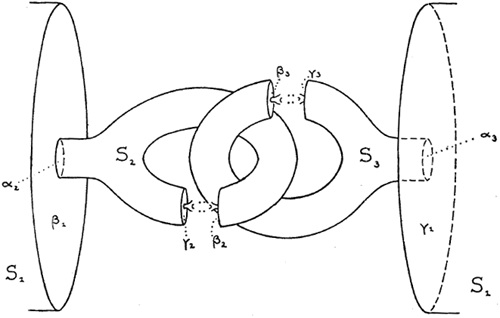The above topological structure, composed of a countable union of compact sets, is called Alexander's horned sphere.
It is homeomorphic with the ball ,
and its boundary is therefore a sphere. It is therefore
an example of a wild embedding in
. The outer complement of the solid is not simply
connected, and its fundamental group is
not finitely generated. Furthermore, the set
of nonlocally flat ("bad") points of Alexander's horned sphere is a Cantor set.

The horned sphere as originally drawn by Alexander (1924) is illustrated above.
The complement in of the bad points for Alexander's horned sphere is simply
connected, making it inequivalent to Antoine's
horned sphere. Alexander's horned sphere has an uncountable infinity of wild
points, which are the limits of the sequences of the horned sphere's branch points
(roughly, the "ends" of the horns), since any neighborhood
of a limit contains a horned complex.
A humorous drawing by Simon Fraser (Guy 1983, Schroeder 1991, Albers 1994) depicts mathematician John H. Conway with Alexander's horned sphere growing from his head.